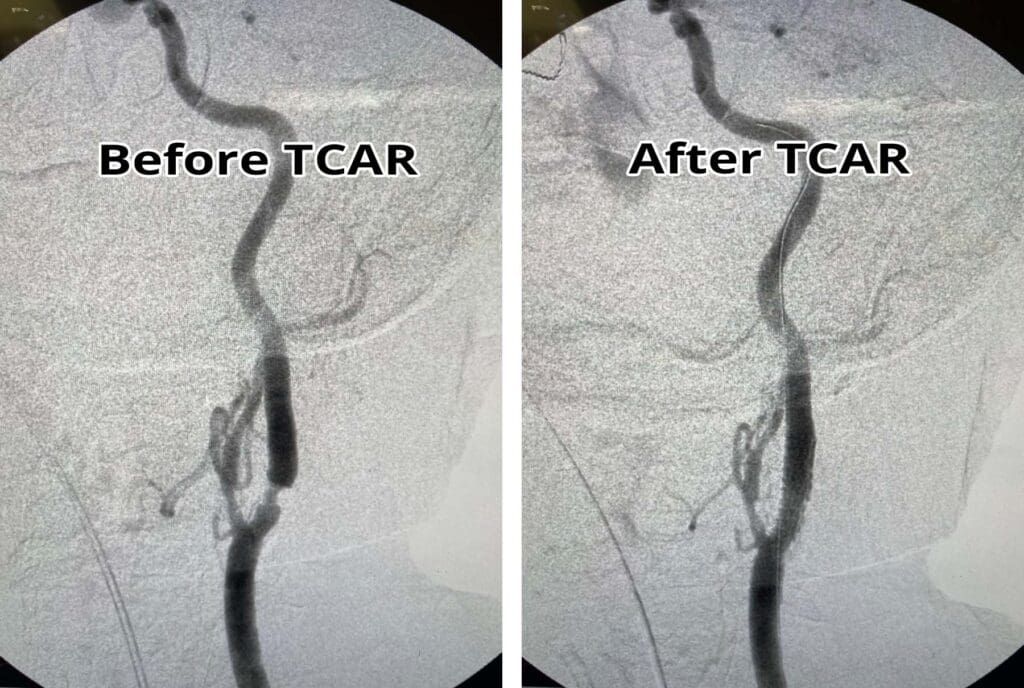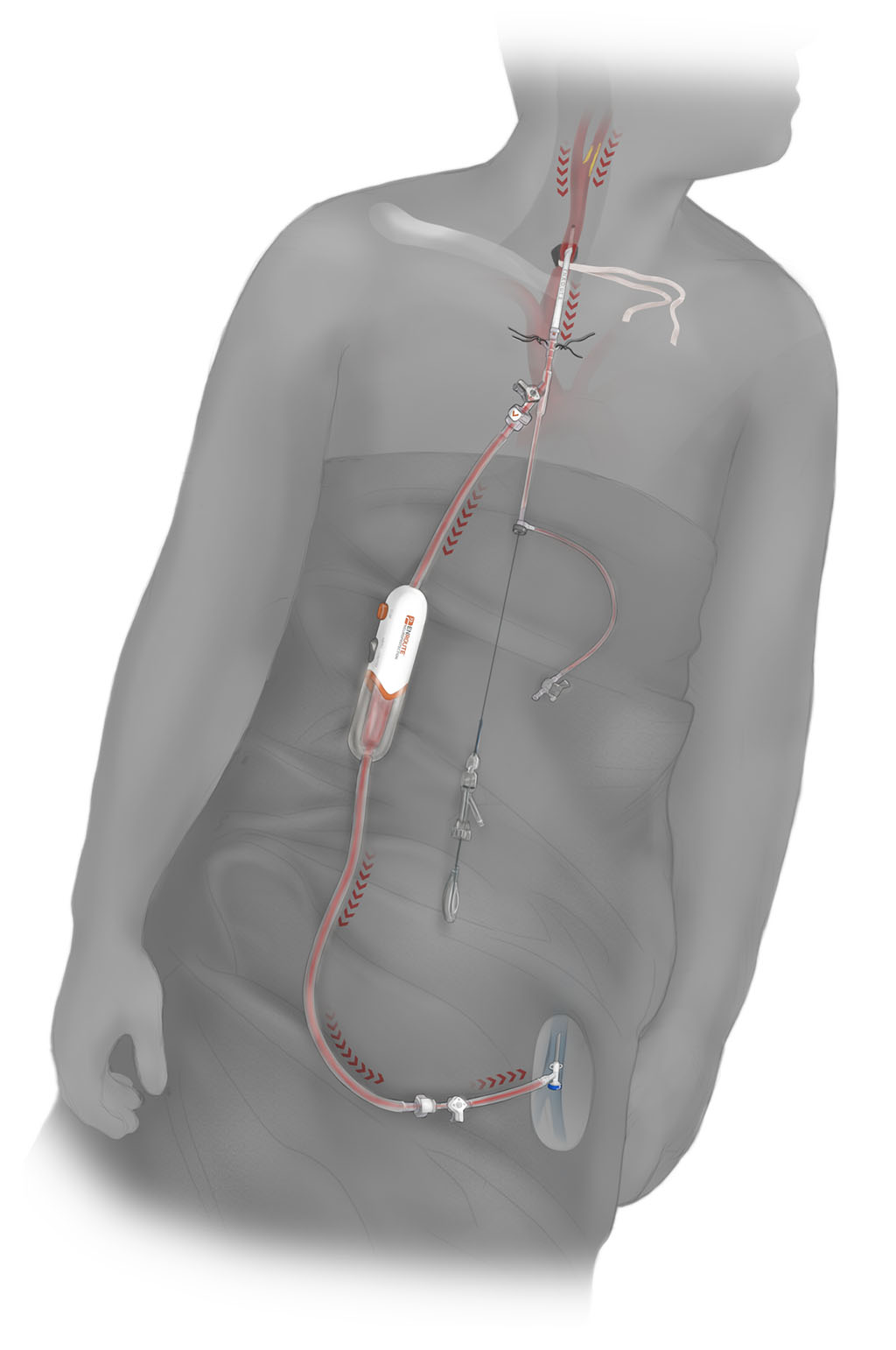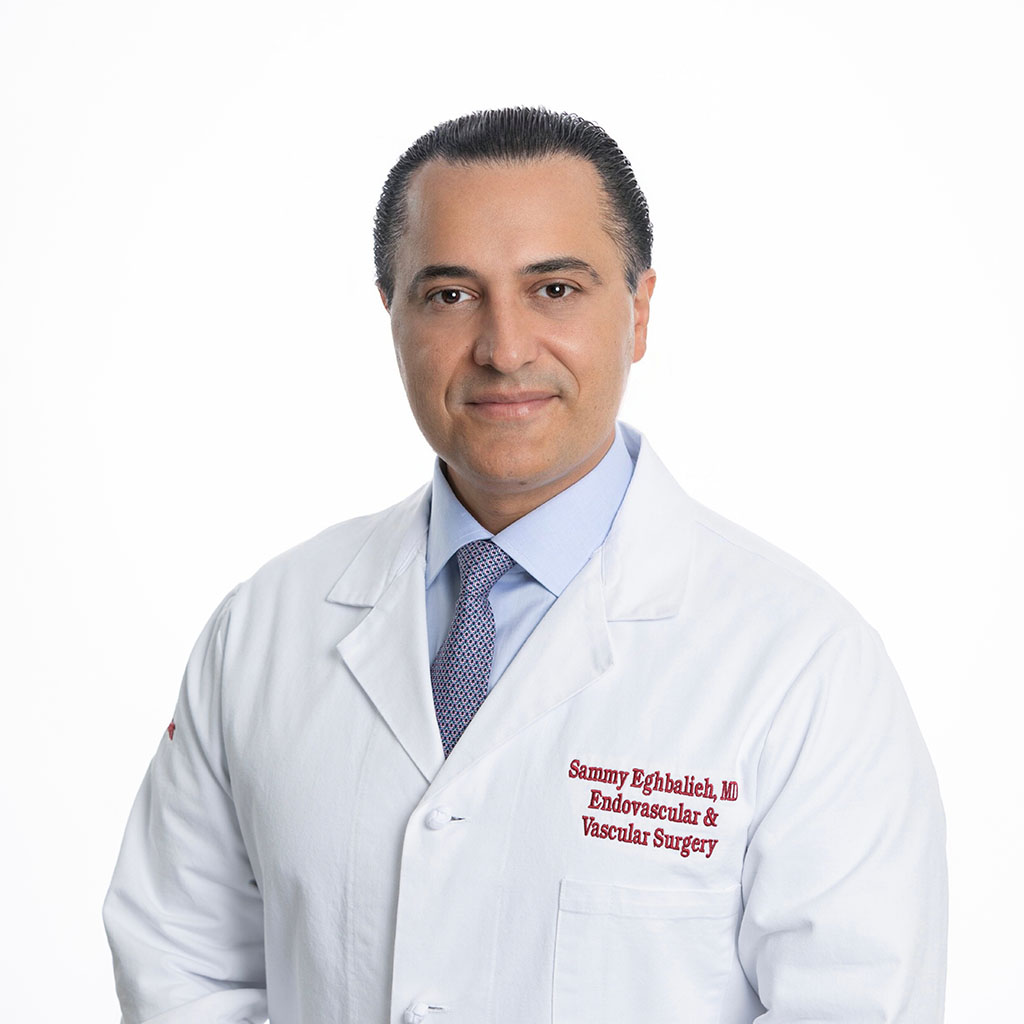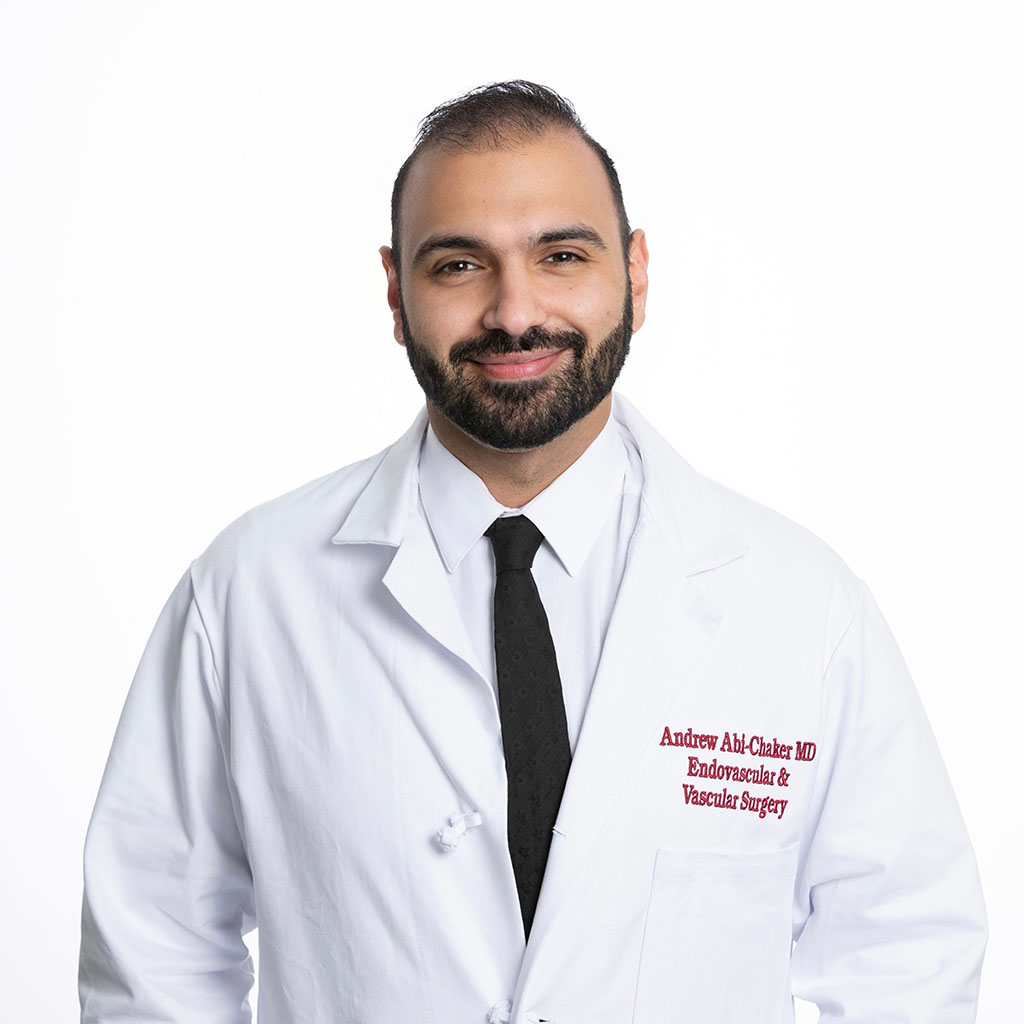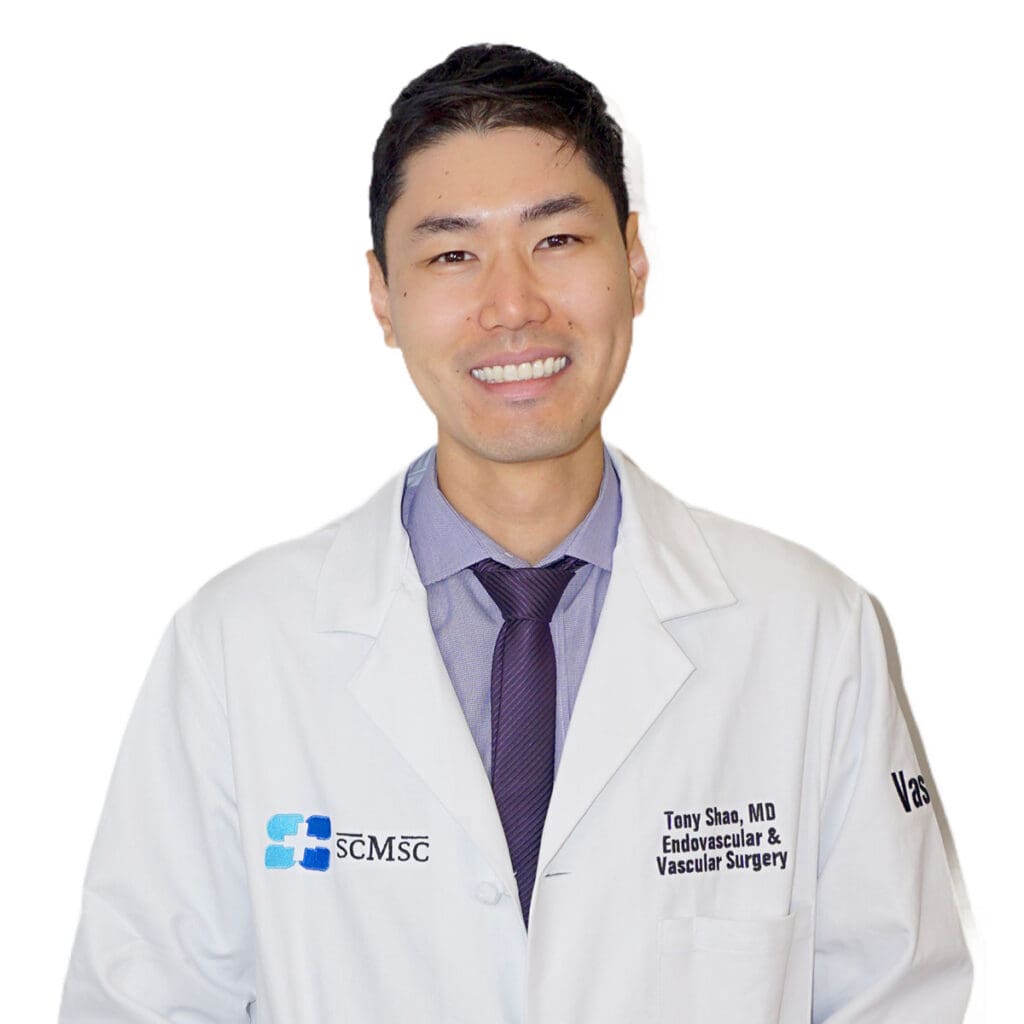Transcarotid Artery Revascularization (TCAR) for Los Angeles
Trust the Vascular Specialists at the Southern California Multi-Specialty Center – SCMSC
TCAR Overview
For decades carotid endarterectomy (CAE) has been considered the gold standard for treating carotid artery disease because of its low procedural stroke rate. However, treating carotid artery disease always comes with risks, one of those risks is stroke. Although carotid endarterectomy (CEA – surgical removal of deposits from an artery) has a low risk of stroke, it carries a higher risk for other complications such as: myocardial infarction and cranial nerve damage.
However, a new approach for treating carotid artery disease is now available. It’s called TCAR, or TransCarotid Artery Revascularization. This approach offers many benefits over traditional CEA and carotid artery stenting (CAS) with traditional filter devices.
TCAR versus Carotid Angioplasty and Stenting (CAS)
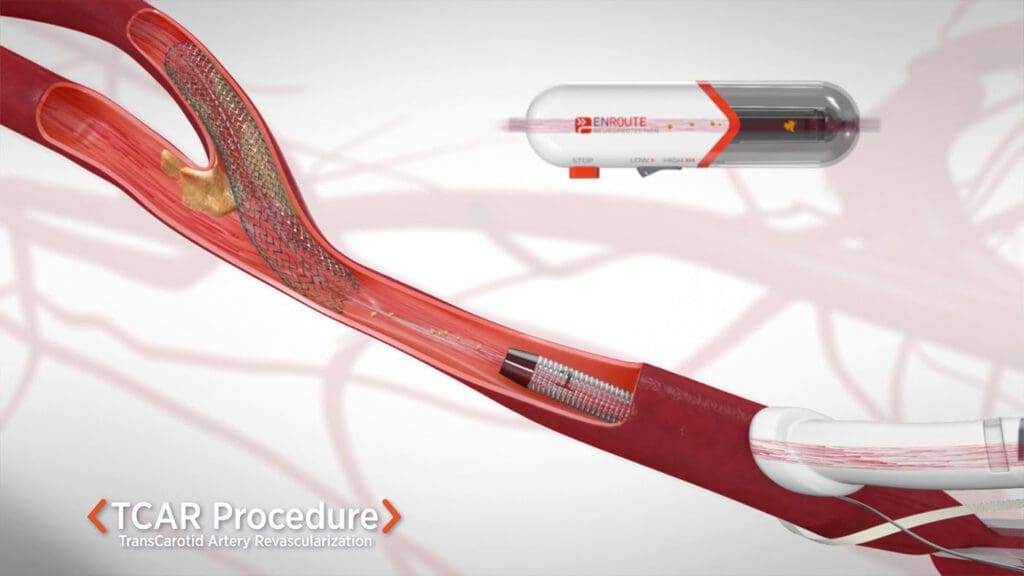
Picture shows an illustration of the ENROUTE® filtration device being used during a TCAR procedure where a stent has been placed in the internal carotid artery.
Both procedures aim to reduce the risk of stroke by restoring adequate blood flow to the brain. However, there are some differences between TCAR and CAS in terms of technique and outcomes.
TCAR is a relatively newer procedure that combines elements of traditional carotid endarterectomy (CEA) and CAS. During TCAR, a small incision is made in the neck to directly access the carotid artery. A sheath is then inserted into the artery and connected to a neuroprotective system that temporarily reverses blood flow away from the brain, reducing the risk of stroke. A stent is placed to stabilize plaque in the artery and open the blockage to the brain. Any plaque that is disturbed during stent or balloon placement is filtered through the ENROUTE® filtration device.
On the other hand, CAS involves accessing the carotid artery through a small incision in the groin or arm. A catheter is guided through the blood vessels to the site of the blockage in the carotid artery. A protective filter is temporarily placed as a balloon is inflated to widen the narrowed area, and a stent is placed to keep the artery open. After stent placement the filter device is removed.
Advantages of TCAR
One advantage of TCAR over CAS is the utilization of the neuroprotective system, which redirects blood flow away from the brain during the procedure, reducing the risk of stroke. This system allows for safer manipulation of the carotid artery and minimizes the chances of plaque dislodgement during the intervention. Filters used with traditional carotid angioplasty and stenting have limitations that the ENROUTE ® Neuroprotection system does not. Sometimes traditional filters can not be used depending on your carotid anatomy and severity or location of the blockage. Additionally, TCAR is associated with a lower risk of cranial nerve injury, a potential complication of traditional CEA.
Ultimately, the choice between TCAR and CEA depends on the individual patient’s characteristics, including the severity and location of the carotid artery disease, the patient’s overall health, and the experience and preference of the treating physician. At SCMSC the surgeons have extensive experience using this new advanced procedure, TCAR, but have training in all approaches to treating carotid disease and can use the treatment option that best fits your specific anatomy.
Why is the TCAR Procedure Superior?
During traditional carotid surgery, a piece of plaque can sometimes break off and cause a stroke. This is why doctors use devices such as filters or clamps to catch any debris and protect you from stroke.
The TCAR approach applies a “reverse flow” method that temporarily reverses the blood flow during the procedure, preventing pieces of plaque from going to your brain and causing a stroke. Instead, any debris or plaque that breaks off is filtered out through the ENROUTE ® flow controller device.
There are many benefits to the “reverse flow” method. If your carotid anatomy doesn’t allow space for filter placement or you have severe carotid disease, your treatment options may be limited with traditional CAS or CEA surgery. However, with TCAR, physicians can treat difficult cases that are not able to be done surgically or with traditional carotid artery stent systems.
The TCAR Procedure: What to Expect
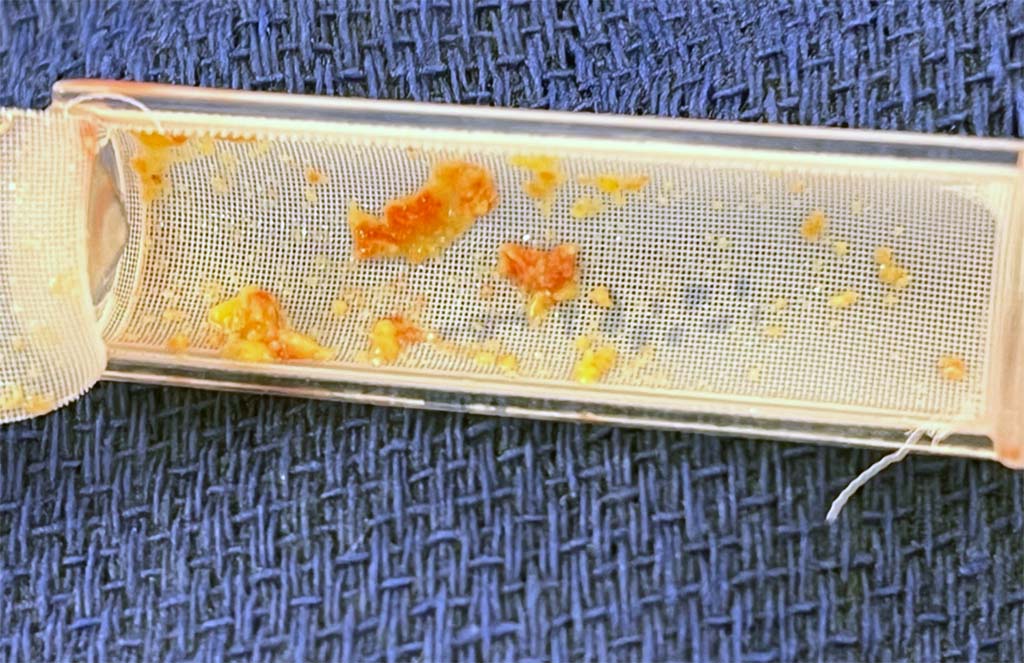
TCAR offers a low procedural stroke rate similar to and in some cases lower than CEA, but unlike CEA you will have a much smaller and less visible scar. Additionally, you will likely be able to go home sooner after the TCAR procedure compared to surgical CEA. Typically, patients having the TCAR procedure recover more quickly.
If You Need Transcarotid Artery Revascularization
If you have carotid artery disease, ask your physician about your options for treatment. Carotid artery disease should only be treated by physicians with extensive training in this area, Vascular Surgeons and/or Neurosurgeons. Drs. Eghbalieh and Abi-Chaker are trained vascular surgery specialists in the advanced TCAR procedure. For a carotid disease evaluation, a carotid artery ultrasound, or for more information about the TCAR procedure, call our office at (818) 900-6480.
TransCarotid Artery Revascularization FAQs
What is TransCarotid Artery Revascularization or TCAR?
How is TCAR better for patients?
TCAR has a very low procedural stroke rate. It is also less invasive than open surgery, so there’s less chance for surgical complications like heart attacks, infection and cranial nerve injury. TCAR patients also recover quickly and almost always go home the next day with less pain and smaller scars.
How safe is TCAR?
Who should be considered for the TCAR procedure?
What happens during a TCAR procedure?
The entire procedure usually takes less than an hour. Patients can be either asleep or awake during the TCAR procedure and patients are typically held overnight for observation.
Is it ever a problem that the blood is being diverted away from the brain?
Who invented TCAR?
Our Vascular & Endovascular Surgeons
It's important to remember not all physicians are trained in advanced vascular and endovascular surgery. It’s a good practice to get multiple opinions and do research on the surgery and the physician.
Make an appointment at SCMSC
We look forward to welcoming you
Schedule an evaluation with Dr. Eghbalieh or Dr. Abi-Chaker at Southern California Multi-Specialty Center.



